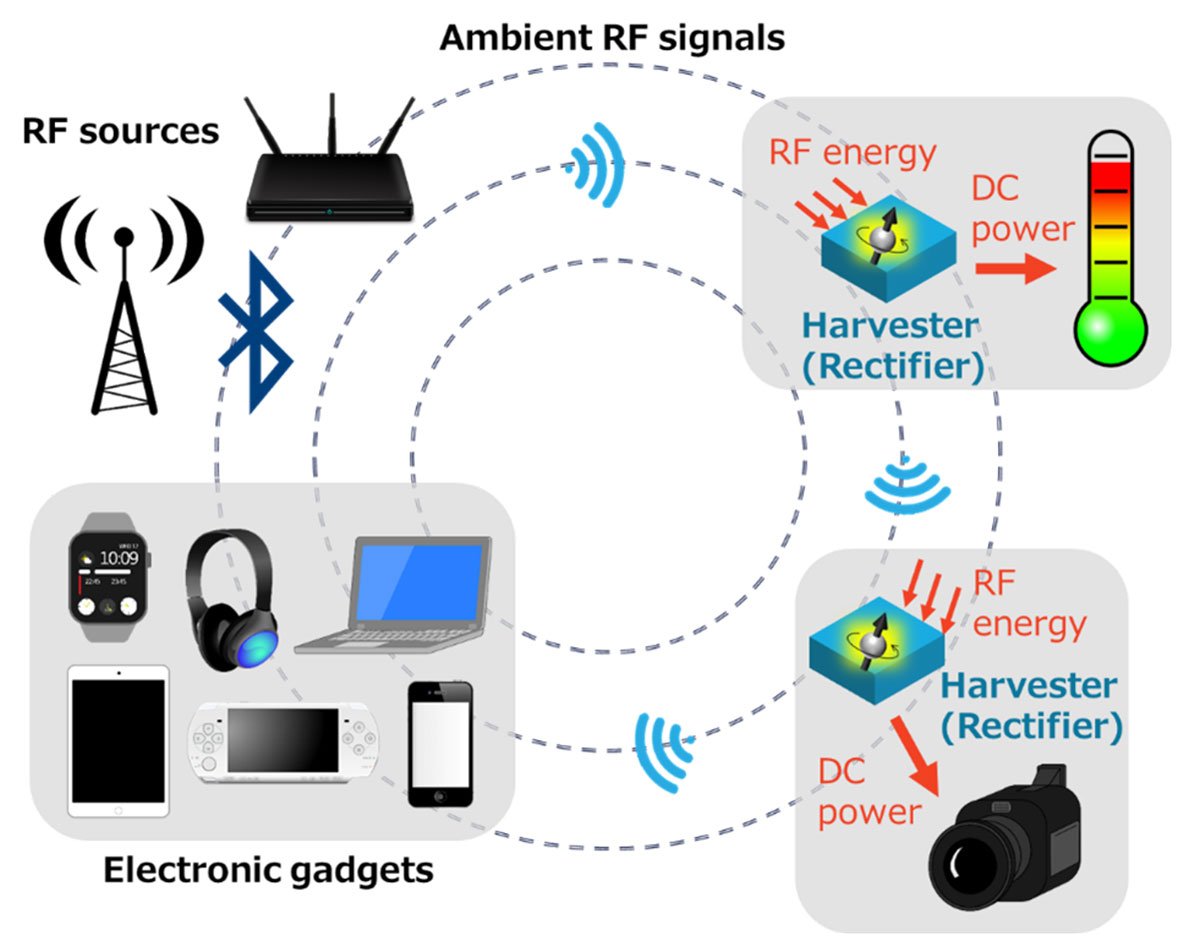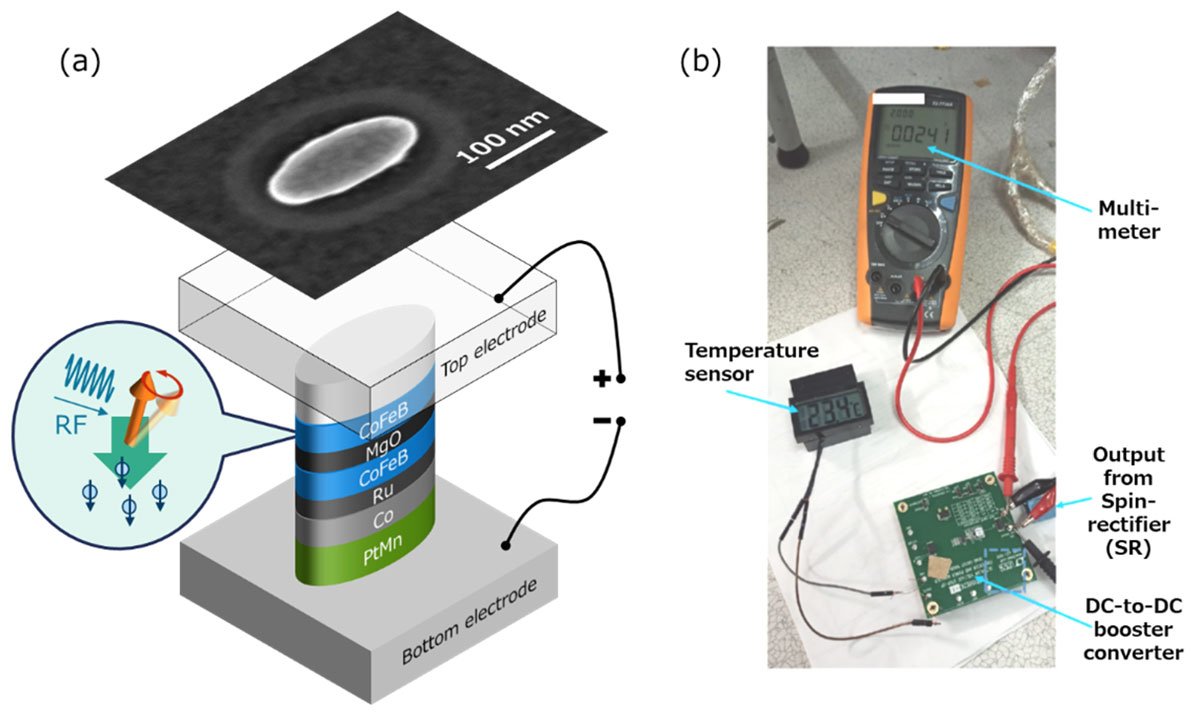We are constantly surrounded by electromagnetic waves such as Wi-Fi and Bluetooth signals. What if we could turn the unused excess into usable energy? Researchers at Tohoku University, the National University of Singapore, and the University of Messina developed a novel technology to efficiently harvest ambient low-power radiofrequency (RF) signals into direct-current (DC) power. This 'rectifier' technology can be easily integrated into energy harvesting modules to power electronic devices and sensors, enabling battery-free operation.
The results were published in Nature Electronics on July 24, 2024.
Collecting and then converting ambient energy sources into usable energy is referred to as "harvesting." Small devices can harvest the energy, which can reduce battery dependency, extend device lifetimes, and minimize the environmental impact. Instead of having to physically travel to devices in remote regions to constantly replace batteries, the device can be powered remotely by ambient energy sources such as everyday RF wireless signals.

The downside of this method is that the source of the signal typically has to be in close proximity to the electronic device in question. Existing technologies, such as the Schottky diode, face challenges in terms of low RF-to-DC conversion efficiency for faint ambient RF signals (typically less than -20 dBm).
To address these challenges, the research team has developed a compact and sensitive rectifier technology that uses a nanoscale spin-rectifier (SR) to convert ambient wireless RF signals that are less than -20 dBm to a DC voltage. The SR consists of a nanoscale magnetic tunnel junction made of CoFeB/MgO, that is used in a nonvolatile memory technology.
The team optimized the SR devices, taking particular attention to the material's magnetic anisotropy, device geometry, and tunneling barrier properties. Then, the RF-to-DC conversion performance was tested for two configurations: 1) a single SR-based rectenna operational between -62 dBm and -20 dBm, and 2) an array of 10 SRs in series. Integrating the SR-array into an energy harvesting module, they successfully powered a commercial temperature sensor at -27 dBm.

The researchers are now exploring the integration of an on-chip antenna to improve the efficiency and compactness. The team is also developing series-parallel connections to tune impedance in large arrays of SRs, utilizing on-chip interconnects to connect individual SRs. This approach aims to improve how RF power is harvested. The study of this technology may lead to the adoption of a self-sustaining, green alternative energy choice that could solve many issues in the future.
- Publication Details:
Title: Nanoscale spin rectifiers for harvesting ambient radiofrequency energy
Authors: Raghav Sharma, Tung Ngo, Eleonora Raimondo, Anna Giordano, Junta Igarashi, Butsurin Jinnai, Shishun Zhao, Jiayu Lei, Yong-Xin Guo, Giovanni Finocchio, Shunsuke Fukami, Hideo Ohno & Hyunsoo Yang
Journal: Nature Electronics






